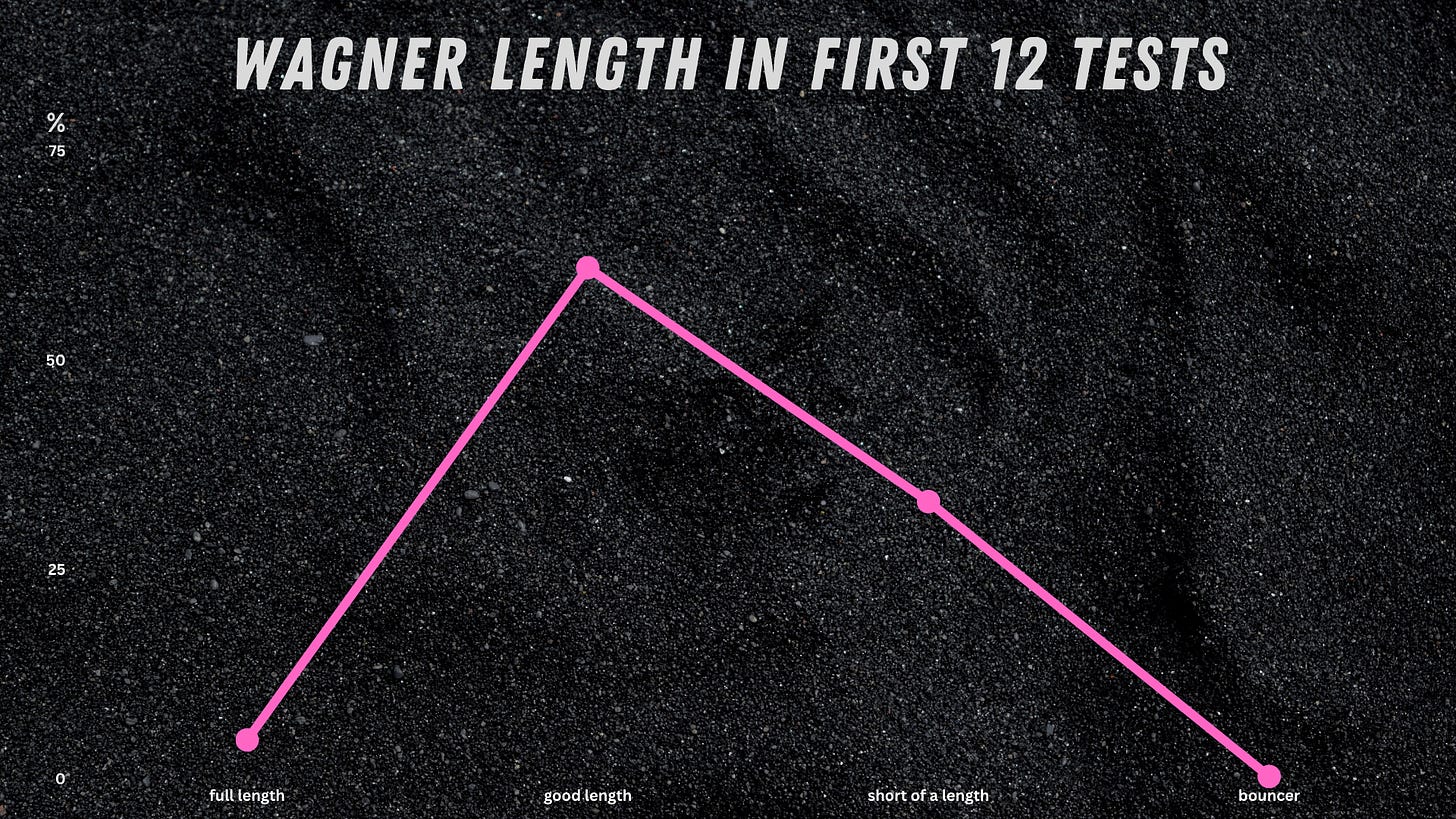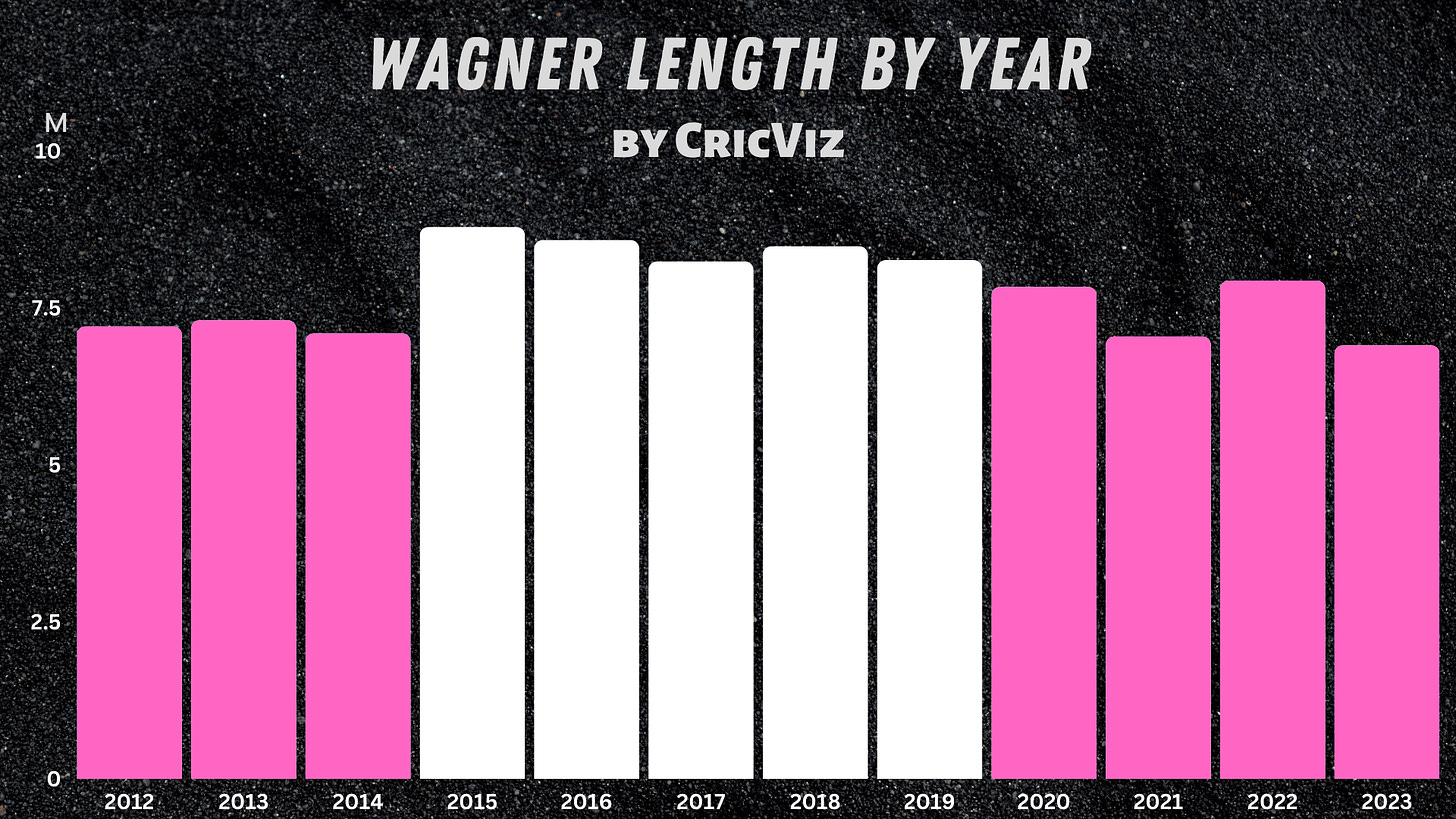The many reincarnations of Neil Wagner
How the left-armer kept doing whatever he had to in order to forge a pro career.
Neil Wagner told anyone who would listen that he would make it as a professional cricketer. But to many who knew of him, that seemed like a huge mountain to climb.
Wagner had talent, he was high energy, could bowl all day and was reasonably accurate. But he wasn’t a very fast bowler, nor was he a magician with the ball, and most importantly he was short.
Back then, the left-arm seamer from Pretoria was a combination of Andre Nel and Dale Steyn. And less skilled. He obviously had some of Nel’s incredible work ethic and on-field anger. He had pace but probably was halfway between Nel and Steyn in velocity.
And there are more things they have in common, Wagner was in the same domestic set-up as Steyn. If you are height challenged, the worst thing to have is another bowler who is better than you at the same low release point. But there was another bowler that was holding him back, and he was about the same height as Steyn and Wagner together.
Morne Morkel took a long time to develop, and maybe he never got to the Joel Garner level he should have. But he was still the 4/80 man. So this meant that Wagner was behind the two most obvious fast-bowling talents around. Domestically, and internationally.
When he played for Northerns - which is one of the teams that formed the Titans franchise - he took 79 wickets at 18. For those who don’t know, that is like the second-tier first-class system of South Africa. The harder first class was with the Titans. He did play twice for them, but only took three wickets at almost 40. People thought he was good, but not quite good enough.
Oh, and at Titans, there was not one Morkel, but two, because they had Albie as well. And Andre Nel. Wagner would originally mention that the quota system hurt his career, but he admitted later on he was in the wrong team at the wrong time.
And he was pigeonholed as too small, not quite fast enough, not that skilful and South Africa has never had the kind of thirst for left-arm seam Pakistan had.
That is the end of phase one.
A lot of players would just disappear at this point. But Wagner wasn’t that kind of guy, he still told everyone that would listen that he would make it professional. And he was incredibly proactive. He wasn’t going to let two great bowlers stop his progress, so he pivoted, twice.
You can find heaps of great info on all this over at Daniel Gallan’s piece.
In 2008 he plays in the Liverpool league. He took 50 wickets at 15. And he’s not the only Test player here. Simon Kerrigan takes 69 at 13. That is good enough to get some second-XI cricket with Sussex and be offered deals by them and Hampshire. And that is where he makes a rogue decision to go to New Zealand and play for Otago for a lot less money.
That was a bold and unusual choice for someone with county offers. Especially as Wagner’s father is English. But Otago Coach Mike Hesson - who would go on to be NZ head- persuaded him to come over. The reason he chose New Zealand was that Wagner wanted to play international cricket.
In his first game for Otago, Trent Boult saw this short snarling fast bowler and mocked him on the field. Wagner was what they call in South Africa, a proper Dutchman. And he was trained to be very aggressive. But New Zealanders thought that was silly. So early on Wagner realised he had to fit in, and so he went from a pocket-sized Andre Nel to something more respectable in his new home.
That is the end of phase two.
The bouncers he once bowled seemed to disappear from his armoury as he became a Kiwi-length bowler. But he also took a lot of wickets, and he was identified as a future New Zealand player almost immediately. By his third season, he was the top wicket-taker, and he backed that up again in the following year. New Zealand picked him to make his debut in 2012.
In two years over 12 Tests he managed 39 wickets at 38. The problem was that Wagner wasn’t that fast, he wasn’t tall and he wasn’t that skilful. He had energy, stamina, and was smart, but at Test cricket, everything that held him back domestically in South Africa was still there. But he was also good enough to take a five-wicket haul in Bangladesh.
The interesting thing is Wagner had bowled more full tosses than bouncers, and in 20 innings he had delivered only 7 genuine short ones.
He was a bowler without that much skill, but decent pace, and some swing, and not enough to cause anyone any real damage. Let us be brutal here, if he wasn’t left-arm and been able to bowl some long spells, he probably gets written off as a first-class-only cricketer.
Then he plays a game in Auckland against India. New Zealand put on 500, and Wagner cashes in with four wickets and helps mop up the tail. New Zealand collapse in the second innings, meaning India need 407 to win. And the first nine players make double figures as they crawl towards the target.
But Wagner keeps chipping away, taking wickets and making India feel less comfortable about the chase. Every wicket he gets is of a set batter. And his lengths completely change.
But the most important thing is Wagner bowls three bouncers in the first innings, delivers 18 in the second, and takes two wickets with them.
This is the end of phase three.
I don’t need to tell you what happened next, because chances are you have seen Wagner bowl or my video of him. But he becomes the most unique Test seamer since Bob Appleyard.
Lengths compared to old
So if you take the India series out, and you look at his lengths before and after, you will see how remarkable his change is. He bowls so many short balls that he currently has the most wickets of any bowler in history pitching the ball shorter than 9 metres. Second and third are Stuart Broad, who is a foot taller and a yard faster than him. And Mitchell Johnson, who is three yards quicker, and was known who destroy people with the short ball. So it tells you how much he did it.
So does this from Cricviz. No one has ever taken a higher percentage of wickets bowling as many balls short of a length or further back than Wagner.
And this of course includes the period when he didn’t try. On this list, he is by far the shortest and slowest.
And this is the period of the game he is known for, so there is not much you need to be told about it. But how about this, let’s drop his record in this period. He has the sixth-best average on this list.
Let’s focus on numbers four and seven though. That is the two guys from the Titans that kept him out of South African contention. They both bowled exactly as people thought they would. Steyn bowled skilful seam at a fast pace, and Morne bowled back of a lengthy that was fast and tall.
Neil Wagner invented a new kind of bowling, fast medium left-arm bouncers with a stacked nu-wave bodyline field. And here he is up with some of the best bowlers of his - or any - generation.
They were here because they did exactly as they should, Wagner was here on his fourth reincarnation just trying to force a career any way he could.
When he comes up with this method it was a dark day for seamers. The batters were in total control, so an extreme method like Wagner's had to be found. And while the rest of the world’s bowlers just hoped for a nice pitch on occasion, Wagner invented a whole new length. In 2015 he was so happy with his method he bowled an average length of nearly nine metres. But by the end of 2019, it was clear cricket had changed. The wobble ball had come in, the Kookaburras had been upgraded, and seamers were well on top.
That was the end of phase four.
It made no sense banging the ball into the middle of wickets when everyone was nipping it around. Teams wanted to keep the ball as fresh as they could so you could maintain some lateral movement.
Also, Wagner got old. There is a big different bowling his fifty arm-pit balls at 135 KPH, then 125. And while he still had some pace, bowling it for 10 over spells - which had been a hallmark of his entire career - was pretty tough when he was getting into his late 30s. So Wagner has reinvented himself again.
This is from CricViz, and it shows you how he was comfortably above 130 KPH until 2020. That year his average speed is bang on it, the same as the following, and then he drops to high 120s afterwards.
But Cricviz have more. They have the degree he swings the ball.
And again, you can see that by 2020 there is a big jump in how much he gets the ball to hoop.
We saw all this with the ball that bowled Zak Crawley which ended up being a no-ball. Wagner is swinging the ball a lot now. He is doing it slower, and he is bowling way fuller.
But he also bowled short against England when he thought he had to. Meaning for the first time in his career he is a complete bowler. Phase five is most probably the last we’ll see of him in Test cricket. Someone who can use the accuracy he has long had, the skills he had to learn and his unique slow bouncer skill.
Phase one - Stuck behind greats
Phase two - Accuracy, left-arm and high energy
Phase three - Too slow but tries hard
Phase four - Bouncers
Phase five - Whatever works
There are many things to like about him. But the fact that he never stopped changing, trying and improving just because he couldn’t see another way. Neil Wagner told people he would do whatever he had to make it as a professional, at the age of nearly 37 he is still running in, and in this last match, he took his 250th wicket.
He tried to get the most out of himself as a cricketer. Job more than done, Neil.










